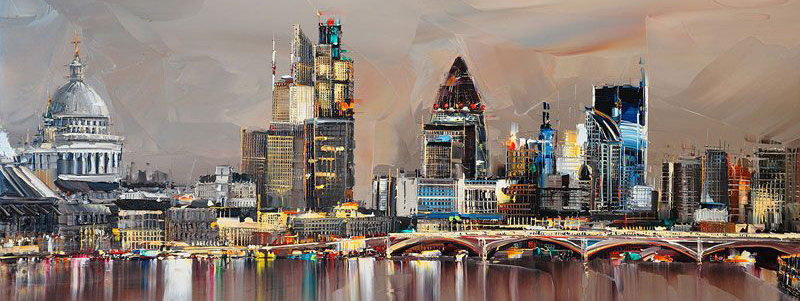One of the architectural styles which is most common throughout the city is the Norman style, contemporary to the Romanesque style in continental Europe, and characterized by mighty-looking pillars and long naves. Then we find the late Gothic style, which roughly dates from 1340 to 1530. Also common is the Tudor style, which peaked in the Sixteenth and Seventeenth Centuries, and featured buildings in wood and bricks, where one can make out the Italian, Dutch, and German influence. The Italian style is also to be noted in Palladianism, the style of the Renaissance villas designed by the famous architect. The Georgian style, instead, sober and minimal, retrieves the classical elements of ancient Greek and Roman buildings, whereas the Victorian style is often marked by the presence of red bricks on the external walls. All the big buildings built in the Nineteenth Century were built in the Victorian style, which somewhat mimics the neo-Gothic style.
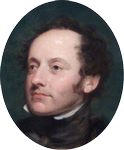 Charles Barry, in charge of the rebuilding of the Houses of Parliament, was the precursor of such a trend in the years 1830-40. Also some of the variety shops and train stations, such as that of St Pancras, designed in 1873 by George Gilbert Scott, creator of the Albert Memorial, were built in this style. In those years, a style known as "Perpendicular" was born, and is considered native to England, bearing many pinnacles and turrets.
Charles Barry, in charge of the rebuilding of the Houses of Parliament, was the precursor of such a trend in the years 1830-40. Also some of the variety shops and train stations, such as that of St Pancras, designed in 1873 by George Gilbert Scott, creator of the Albert Memorial, were built in this style. In those years, a style known as "Perpendicular" was born, and is considered native to England, bearing many pinnacles and turrets. 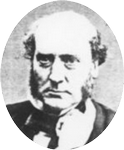 Some ancient buildings, such as Guildhall, dating back to the Fifteenth Century, have been reshaped following the Victorian neo-Gothic style. The popularity of this style lasted for some time and, for example, inspired the construction of the Royal Court of Justice and the Natural History Museum.
Some ancient buildings, such as Guildhall, dating back to the Fifteenth Century, have been reshaped following the Victorian neo-Gothic style. The popularity of this style lasted for some time and, for example, inspired the construction of the Royal Court of Justice and the Natural History Museum. In London there are many famous examples belonging to the current of Modern Architecture, which started appearing during Virginia Woolf's lifetime, and towards which she was rather disapproving. Here is what she wrote about it: "The charm of modern London is that it is not built to last; it is built to pass. Its glassiness, its transparency, its surging waves of coloured plaster give a different pleasure and achieve a different end from that which was desired and attempted by the old builders and their patrons, the nobility of England. Their pride required the illusion of permanence. Ours, on the contrary, seems to delight in proving that we can make stone and brick as transitory as our own desires. We do not build for our descendants, but for ourselves and our own needs. We knock down and rebuild as we expect to be knocked down and rebuilt."

Many famous architects have worked in London. The most famous of them all, who had an important role in rebuilding London after the Great Fire of 1666, is Christopher Wren. Wren had conceived a plan based on the principles of an Italian city, with large streets, vast squares, and spacious buildings.
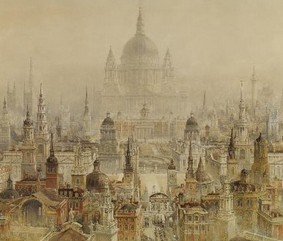
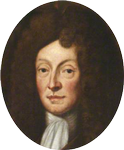 In this, he found himself in agreement with King Charles II, who desired an urban organization with the magnificence of Venice or Rome. Unfortunately, the noblemen and merchants of the City did not agree, as this would have interfered with their properties and real estate assets. However, as they wished to show off their social status and at the same time their generosity, they appointed Wren with the construction of a number of churches near the headquarters of their commercial companies. The most important of these is St Paul's Cathedral. The other nineteen churches all have different types of naves, roofs, skylights, steeples, towers and inside area designs, and were damaged or destroyed during the Blitz. Some of them (St Bride's, St Mary-le-Bow, St Clement Danes, St Dunstan-in-the-East, St Martin-within-Ludgate, St Benet Paul's Wharf, and St Stephen Walbrook, the most magnificent of them all) have been restored.
In this, he found himself in agreement with King Charles II, who desired an urban organization with the magnificence of Venice or Rome. Unfortunately, the noblemen and merchants of the City did not agree, as this would have interfered with their properties and real estate assets. However, as they wished to show off their social status and at the same time their generosity, they appointed Wren with the construction of a number of churches near the headquarters of their commercial companies. The most important of these is St Paul's Cathedral. The other nineteen churches all have different types of naves, roofs, skylights, steeples, towers and inside area designs, and were damaged or destroyed during the Blitz. Some of them (St Bride's, St Mary-le-Bow, St Clement Danes, St Dunstan-in-the-East, St Martin-within-Ludgate, St Benet Paul's Wharf, and St Stephen Walbrook, the most magnificent of them all) have been restored. 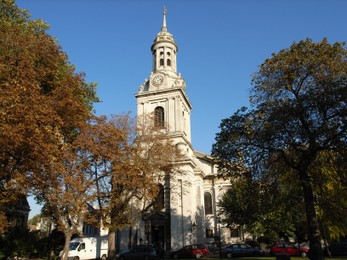 Another great architect was Nicholas Hawksmoor, who was a follower of Wren's and worked with him from 1684 to 1700. Hawksmoor was the builder of the church of St Mary Woolnoth at the corner of Lombard Street, St Alfege in Greenwich, St George in Bloomsbury, St George-in-the-East in Wapping, and St Anne in Limehouse. He worked alongside Wren at the construction of St Paul's Cathedral, the Royal Hospital in Chelsea, as well as that of Greenwich.
Another great architect was Nicholas Hawksmoor, who was a follower of Wren's and worked with him from 1684 to 1700. Hawksmoor was the builder of the church of St Mary Woolnoth at the corner of Lombard Street, St Alfege in Greenwich, St George in Bloomsbury, St George-in-the-East in Wapping, and St Anne in Limehouse. He worked alongside Wren at the construction of St Paul's Cathedral, the Royal Hospital in Chelsea, as well as that of Greenwich. The third of the great architects of the Seventeenth Century, along with Wren and Hawksmoor, was John Vanbrugh, designer of Castle Howard and Blenheim Palace, as well as a number of country residences, such as Seaton Delaval Hall, which has the sturdy appearance of a medieval fort. Vanbrugh, a modern thinker who fought for women's rights in marriage and for parliamentary democracy in politics, was also a playwright.
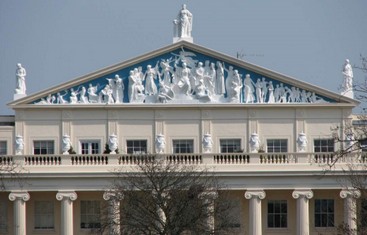
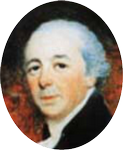 John Nash, born in 1752 in Lambeth, son of a builder of windmill machinery, was the designer of the elegant buildings which flank Regent Street, as well as the Royal Pavilion of Brighton, Carlton House Terrace, the elegant Cumberland Terrace, the Theatre Royal of Haymarket, and the great Marble Arch, not to mention a segment of Regent's Canal. Nash, who is considered the main mind behind Regency London, also saw to the remodelling of the old building of Buckingham Palace.
John Nash, born in 1752 in Lambeth, son of a builder of windmill machinery, was the designer of the elegant buildings which flank Regent Street, as well as the Royal Pavilion of Brighton, Carlton House Terrace, the elegant Cumberland Terrace, the Theatre Royal of Haymarket, and the great Marble Arch, not to mention a segment of Regent's Canal. Nash, who is considered the main mind behind Regency London, also saw to the remodelling of the old building of Buckingham Palace. 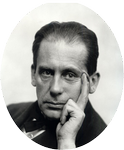 A number of foreign architects also worked in London, such as Walter Gropius, born in Germany and founder of the Bauhaus, which followed the inspiring principle of "Form follows function". With the pretext of a temporary commitment, he had left nazi Germany and sought refuge in London, where he collaborated with Maxwell Fry and the Isokon Group. The homonymous building, in Lawn Road, Hampstead, is the most famous one. Gropius is also famous for the design of the doorknobs, which are now considered an icon of the Twentieth Century.
A number of foreign architects also worked in London, such as Walter Gropius, born in Germany and founder of the Bauhaus, which followed the inspiring principle of "Form follows function". With the pretext of a temporary commitment, he had left nazi Germany and sought refuge in London, where he collaborated with Maxwell Fry and the Isokon Group. The homonymous building, in Lawn Road, Hampstead, is the most famous one. Gropius is also famous for the design of the doorknobs, which are now considered an icon of the Twentieth Century. 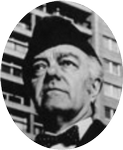 Ernö Goldfinger, born in Budapest in 1902, became a focal member of the British Modern Movement. He is famous for the towers of apartments, such as the Trellick, and for his home in Willow Road, which reaped the hostility of the neighbours to the point that he was forced to change the facade. His name inspired that of James Bond's enemy in the book by Ian Fleming, who was one of his neighbours and detested him.
Ernö Goldfinger, born in Budapest in 1902, became a focal member of the British Modern Movement. He is famous for the towers of apartments, such as the Trellick, and for his home in Willow Road, which reaped the hostility of the neighbours to the point that he was forced to change the facade. His name inspired that of James Bond's enemy in the book by Ian Fleming, who was one of his neighbours and detested him. Many architects, like for example George Dance the Elder, were also civil engineers. He himself was also a public infrastructure inspector, and his most important work was Mansion House, built in the Neo-Palladian style. Furthermore, he drafted a number of churches, such as St Botolph-without-Bishopsgate, St Leonard in Shoreditch, St Matthew's, and St Luke's in Old Street, of which he was the parishioner. Of his five sons, three followed in his footsteps. 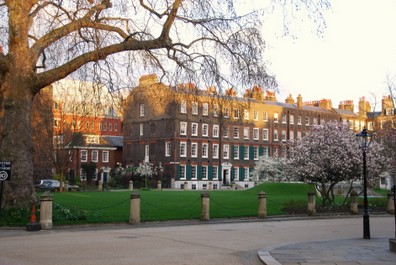
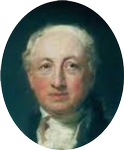 The most famous was George Dance the Younger, born in 1741, who took care of expanding and restoring buildings, amongst which Guildhall, the Billingsgate fish market, and the Royal College of Surgeons at Lincoln's Inn Fields. He also rebuilt the Newgate prison and the church of St Bartholomew-the-Less.
The most famous was George Dance the Younger, born in 1741, who took care of expanding and restoring buildings, amongst which Guildhall, the Billingsgate fish market, and the Royal College of Surgeons at Lincoln's Inn Fields. He also rebuilt the Newgate prison and the church of St Bartholomew-the-Less.

 The most famous was George Dance the Younger, born in 1741, who took care of expanding and restoring buildings, amongst which Guildhall, the Billingsgate fish market, and the Royal College of Surgeons at Lincoln's Inn Fields. He also rebuilt the Newgate prison and the church of St Bartholomew-the-Less.
The most famous was George Dance the Younger, born in 1741, who took care of expanding and restoring buildings, amongst which Guildhall, the Billingsgate fish market, and the Royal College of Surgeons at Lincoln's Inn Fields. He also rebuilt the Newgate prison and the church of St Bartholomew-the-Less. 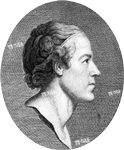 Robert Mylne, born in Edinburgh in 1734, was also an architect, as well as an engineer. He built the first Blackfriars bridge and the Hunterian school of medicine, which today is part of the Lyric Theatre. Mylne was in charge of the maintenance of St Paul's Cathedral, as well as that of various buildings and obelisks of the capital. He was also appointed surveyor to the New River Company, which supplied drinking water to the city via a canal. History has left us with a print taken from an engraving by Vincenzio Vangelisti, which depicts him in profile.
Robert Mylne, born in Edinburgh in 1734, was also an architect, as well as an engineer. He built the first Blackfriars bridge and the Hunterian school of medicine, which today is part of the Lyric Theatre. Mylne was in charge of the maintenance of St Paul's Cathedral, as well as that of various buildings and obelisks of the capital. He was also appointed surveyor to the New River Company, which supplied drinking water to the city via a canal. History has left us with a print taken from an engraving by Vincenzio Vangelisti, which depicts him in profile. Entire dynasties of architects have worked in London.
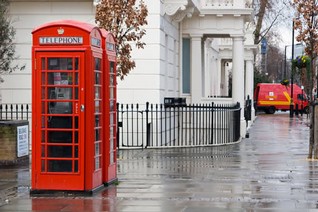
 George Gilbert Scott, born in 1811, was the forefather of one of these. It was he who brought neo-Gothic architecture to the fore, a medieval style adapted in such a way as to answer to the needs of the lifestyle of that period. Scott was the creator of school buildings and juvenile reformatories, yet his most representative works are still the Albert Memorial and the Midland Grand Hotel of the St Pancras rail station. His son, George Gilbert Scott Jr., born in 1839, built the buildings for various colleges in Dulwich and Cambridge. He designed the church of St John the Baptist, which in 1976 became the catholic cathedral of Norwich. He died of cirrhosis of the liver in a room of the Midland Hotel, designed by his father.
George Gilbert Scott, born in 1811, was the forefather of one of these. It was he who brought neo-Gothic architecture to the fore, a medieval style adapted in such a way as to answer to the needs of the lifestyle of that period. Scott was the creator of school buildings and juvenile reformatories, yet his most representative works are still the Albert Memorial and the Midland Grand Hotel of the St Pancras rail station. His son, George Gilbert Scott Jr., born in 1839, built the buildings for various colleges in Dulwich and Cambridge. He designed the church of St John the Baptist, which in 1976 became the catholic cathedral of Norwich. He died of cirrhosis of the liver in a room of the Midland Hotel, designed by his father. 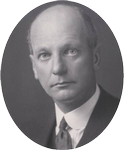 Giles Gilbert Scott, born in 1880, was the designer of the famous red telephone boxes, as well as Waterloo Bridge and the power stations of Battersea and Bankside. He also designed the Liverpool cathedral and worked on many civilian infrastructures for residential use in Maida Vale. Other works of his are the catholic church of Our Lady and St Alphege in Bath, Somerset, and in order to build it, he drew inspiration from S. Maria in Cosmedin in Rome.
Giles Gilbert Scott, born in 1880, was the designer of the famous red telephone boxes, as well as Waterloo Bridge and the power stations of Battersea and Bankside. He also designed the Liverpool cathedral and worked on many civilian infrastructures for residential use in Maida Vale. Other works of his are the catholic church of Our Lady and St Alphege in Bath, Somerset, and in order to build it, he drew inspiration from S. Maria in Cosmedin in Rome. 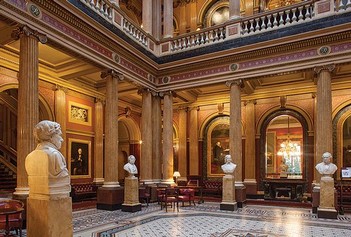
 Another important dynasty of architects is the Barry dynasty. The forefather, Charles Barry, was the creator along with Pugin, in 1836, of the rebuilding of Westminster Palace, which had been destroyed by a fire. Barry was also the designer of the buildings of the Travellers Club and the Reform Club. He saw to redesigning the Horse Guards Parade and the Whitehall Treasury Building. He also carried out many works outside London, designing luxurious country homes. Four of his five sons followed in his footsteps. The oldest of them, Charles Barry Jr., carried forth his work in Dulwich College, rebuilt Burlington House in Piccadilly, and the Great Eastern Hotel in Liverpool Street. Another of his sons, Edward Middleton Barry, completed the Palace of Westminster and redesigned the Opera House of Covent Garden. He also designed the hotels of the stations of Charing Cross and Cannon Street, built the Sick Children Hospital in Great Ormond Street, and rebuilt Eleanor Cross.
Another important dynasty of architects is the Barry dynasty. The forefather, Charles Barry, was the creator along with Pugin, in 1836, of the rebuilding of Westminster Palace, which had been destroyed by a fire. Barry was also the designer of the buildings of the Travellers Club and the Reform Club. He saw to redesigning the Horse Guards Parade and the Whitehall Treasury Building. He also carried out many works outside London, designing luxurious country homes. Four of his five sons followed in his footsteps. The oldest of them, Charles Barry Jr., carried forth his work in Dulwich College, rebuilt Burlington House in Piccadilly, and the Great Eastern Hotel in Liverpool Street. Another of his sons, Edward Middleton Barry, completed the Palace of Westminster and redesigned the Opera House of Covent Garden. He also designed the hotels of the stations of Charing Cross and Cannon Street, built the Sick Children Hospital in Great Ormond Street, and rebuilt Eleanor Cross.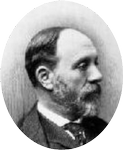 John Wolfe-Barry, born in 1865, made some gothic additions to Tower Bridge, constructed Earl's Court Station, collaborated towards the building of the Great Eastern Hotel in Liverpool Street Station, and designed the extension of the Metropolitan District Line, as well as that of many other underground stations.
John Wolfe-Barry, born in 1865, made some gothic additions to Tower Bridge, constructed Earl's Court Station, collaborated towards the building of the Great Eastern Hotel in Liverpool Street Station, and designed the extension of the Metropolitan District Line, as well as that of many other underground stations. The architect Horace Jones, born in 1819, was specialized in marketplace constructions. He designed the covered structures of the courts in Leadenhall, Smithfield, and Billingsgate. He worked alongside John Wolfe-Barry at Tower Bridge.
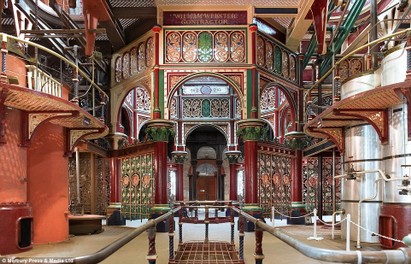
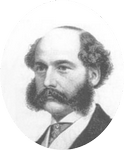 London has also seen its share of civil engineers. The best-known is certainly Joseph Bazalgette, born in 1819 at Hill Lodge in Enfield, in the north of London. Bazalgette rebuilt the three old bridges in Hammersmith, Putney, and Battersea, repaired others, and commenced the project of the free ferry in Woolwich. He was a crucial figure in the construction of modern London, designing the Thames embankments, new streets, and parks.
London has also seen its share of civil engineers. The best-known is certainly Joseph Bazalgette, born in 1819 at Hill Lodge in Enfield, in the north of London. Bazalgette rebuilt the three old bridges in Hammersmith, Putney, and Battersea, repaired others, and commenced the project of the free ferry in Woolwich. He was a crucial figure in the construction of modern London, designing the Thames embankments, new streets, and parks. However, he is especially famous for designing the complex sewage system of the capital and the pumping stations - an especially remarkable specimen is that of Abbey Mills - which improved hygienic conditions of the city, saving it from recurring cholera outbreaks.
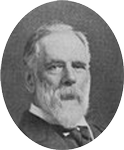 Alexander Binnie, born in 1839, was the head engineer of London City Council. In 1897 he built the first Blackwall Tunnel and in 1902 the Greenwich Foot Tunnel, in order to allow workers living south of the Thames to be able to reach their workplace at the Isle of Dogs. In 1906 Binnie also built the Vauxhall Bridge and expended the sewage system. His son, William, also a civil engineer, spent much time working in Africa and Asia building dams , power stations, and drainage basins. Furthermore, he collaborated in the construction of a number of railway lines in London.
Alexander Binnie, born in 1839, was the head engineer of London City Council. In 1897 he built the first Blackwall Tunnel and in 1902 the Greenwich Foot Tunnel, in order to allow workers living south of the Thames to be able to reach their workplace at the Isle of Dogs. In 1906 Binnie also built the Vauxhall Bridge and expended the sewage system. His son, William, also a civil engineer, spent much time working in Africa and Asia building dams , power stations, and drainage basins. Furthermore, he collaborated in the construction of a number of railway lines in London. 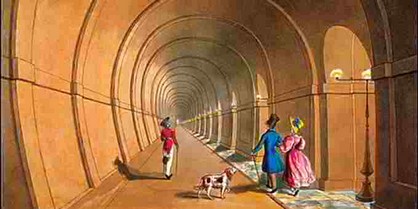
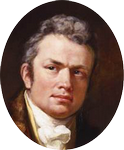 Marc Isambard Brunel, born in 1769, was a French engineer who was forced to leave his country and emigrated to the States. When he came back to Europe, he decided to settle in London, where he started to mass-produce pre-fabricated components for ships, hastening their production. He also designed sawmill machinery and press devices. His most famous work is the tunnel which runs under the Thames, between Rotherhithe and Wapping, still used today as a passage for the underground train route.
Marc Isambard Brunel, born in 1769, was a French engineer who was forced to leave his country and emigrated to the States. When he came back to Europe, he decided to settle in London, where he started to mass-produce pre-fabricated components for ships, hastening their production. He also designed sawmill machinery and press devices. His most famous work is the tunnel which runs under the Thames, between Rotherhithe and Wapping, still used today as a passage for the underground train route. His son, Isambard Kingdom Brunel, born in 1806, after having assisted his father in constructing the tunnel, built a pedestrian bridge in 1845 in Hungerford and designed the bridge suspended over the Avon river near Bristol, which was the longest in the world in its day. He later created a series of tunnels, bridges, and viaducts for the railway system and the underground network. Yet his most famous work was the construction of the ship known as the Great Eastern.
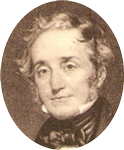 The Cubitt family included many famous civil engineers among its ranks. The brothers Thomas and William, at the beginning of the Nineteenth Century, founded a factory which in turn generated entire neighbourhoods in Belgravia, in Pimlico, and partly in Bloomsbury. After a few years, William went solo in order to have a greater degree of autonomy. He created Cubitt Town on the Isle of Dogs and worked at the South Eastern Railway. Together with his son Joseph, born in 1811, he built part of the railway tracks of the Great Northern and South Eastern and Western lines, which connected London with the whole area of southern England. What is more, he designed Weymouth Pier and Blackfriars bridge. William Cubitt also patented a particular type of sail for windmills. In 1817, he invented a mill which was driven by manpower or by animals. The latter would walk along a large wheel with inbuilt steps, for use in prisons. Furthermore, he carried out improvements to canals and built the Shakespeare Cliff Tunnel, measuring one thousand sixty-eight metres. In order to fulfil it, over eight thousand kilos of gun powder were used, so that part of the cliff could be blown out, enabling the mouth of the Round Down to be enlarged. The Crystal Palace for the Great Exhibition of 1851 was also his work.
The Cubitt family included many famous civil engineers among its ranks. The brothers Thomas and William, at the beginning of the Nineteenth Century, founded a factory which in turn generated entire neighbourhoods in Belgravia, in Pimlico, and partly in Bloomsbury. After a few years, William went solo in order to have a greater degree of autonomy. He created Cubitt Town on the Isle of Dogs and worked at the South Eastern Railway. Together with his son Joseph, born in 1811, he built part of the railway tracks of the Great Northern and South Eastern and Western lines, which connected London with the whole area of southern England. What is more, he designed Weymouth Pier and Blackfriars bridge. William Cubitt also patented a particular type of sail for windmills. In 1817, he invented a mill which was driven by manpower or by animals. The latter would walk along a large wheel with inbuilt steps, for use in prisons. Furthermore, he carried out improvements to canals and built the Shakespeare Cliff Tunnel, measuring one thousand sixty-eight metres. In order to fulfil it, over eight thousand kilos of gun powder were used, so that part of the cliff could be blown out, enabling the mouth of the Round Down to be enlarged. The Crystal Palace for the Great Exhibition of 1851 was also his work. 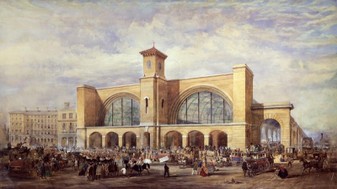 Lewis Cubitt, born in 1799, was the younger brother of Thomas and William. He was a builder of bridges in Asia and South America. In London, he designed King's Cross Station, the adjacent Great Northern Hotel, and the great dark building of the Granary, directly behind the station, which still bears the signs of the war.
Lewis Cubitt, born in 1799, was the younger brother of Thomas and William. He was a builder of bridges in Asia and South America. In London, he designed King's Cross Station, the adjacent Great Northern Hotel, and the great dark building of the Granary, directly behind the station, which still bears the signs of the war. 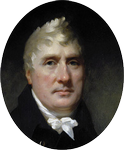 John Rennie was an engineer born in 1761 in a Scottish village, and was in charge of a number of canals and warehouses, however he is known mostly as a builder of bridges. He combined stone and cast iron and created absolutely revolutionary designs for bridges, such as those of Waterloo and Southwark. His last project was that of London Bridge, completed by his son John. He once refused a knighting during his lifetime, and was buried in St Paul's.
John Rennie was an engineer born in 1761 in a Scottish village, and was in charge of a number of canals and warehouses, however he is known mostly as a builder of bridges. He combined stone and cast iron and created absolutely revolutionary designs for bridges, such as those of Waterloo and Southwark. His last project was that of London Bridge, completed by his son John. He once refused a knighting during his lifetime, and was buried in St Paul's. His son George, born in London in 1791, a railway engineer, supervised the construction of many railway lines, but was also the builder of the Serpentine bridge. He elaborated many machines, including a part of the cutter used for building the tunnel beneath the Thames, the work of Marc Brunel.
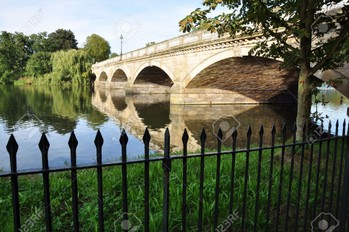 The most famous work carried out by his other son, John Rennie Jr., born in 1794, was the construction of London Bridge, which the latter's father had begun. John Rennie also planned a good number of railway lines.
The most famous work carried out by his other son, John Rennie Jr., born in 1794, was the construction of London Bridge, which the latter's father had begun. John Rennie also planned a good number of railway lines. 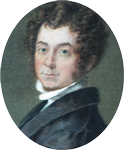 Frederick Trench, born in Ireland in 1775, began his military career as a soldier and went on to become a general. He was a very talented amateur architect. He maintained that the forces of nature should be contained lest they become a source of destruction and illness. In order to avoid this, he planned the Embankment project for the banks of the Thames which was later carried out by Bazalgette. The great statue of Wellington at Hyde Park Corner is his.
Frederick Trench, born in Ireland in 1775, began his military career as a soldier and went on to become a general. He was a very talented amateur architect. He maintained that the forces of nature should be contained lest they become a source of destruction and illness. In order to avoid this, he planned the Embankment project for the banks of the Thames which was later carried out by Bazalgette. The great statue of Wellington at Hyde Park Corner is his. Thomas Page, born in London in 1803, a civil engineer, worked on the tunnel beneath the Thames as an assistant for Isambard Kingdom Brunel, he designed the embankment of the Thames from Westminster to Blackfriars, which however met some obstacles along the way. He built the first bridge in Chelsea, which opened in 1858, and the Westminster bridge, completed in 1862. In 1870, during a conference, he brought up the idea for a tunnel between England and France, one hundred and twenty years before its effective construction.
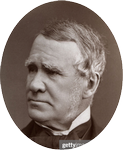 John Hawkshaw, born in Leeds in 1811, also a civil engineer, was the mind behind the railway of Charing Cross and Cannon Street and the bridges which lead these streets to the other side of the Thames. He also completed the suspended bridge of Clifton, which had been commenced by Isambard Brunel, and he transformed Marc Brunel's Thames tunnel in order to adapt it for the passage of railway lines.
John Hawkshaw, born in Leeds in 1811, also a civil engineer, was the mind behind the railway of Charing Cross and Cannon Street and the bridges which lead these streets to the other side of the Thames. He also completed the suspended bridge of Clifton, which had been commenced by Isambard Brunel, and he transformed Marc Brunel's Thames tunnel in order to adapt it for the passage of railway lines. 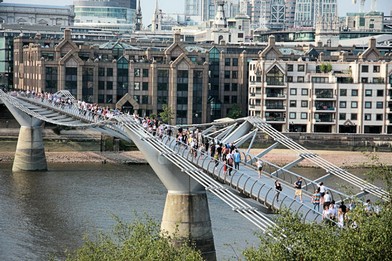 He built canals in different countries, both within Europe and outside it, as well as the Buenos Aires harbour.
He built canals in different countries, both within Europe and outside it, as well as the Buenos Aires harbour.Rowland Mason Ordish, born in 1824, is famous for having designed the dome of the Albert Hall, but is also the maker of the Dublin Albert Bridge, as well as the single-bay roof of St Pancras Station. He patented a system for the construction of suspended bridges, which he used in various European cities.
 Amongst the architects and designers of today, the most well-known is probably Norman Foster, born in Manchester in 1935. He is a high-standing exponent of the so-called "high-tech" architecture. Those arriving in Stansted airport will immediately witness one of his works, seeing as the terminal was designed by him. He also constructed the roof of the Great Court of the British Museum, the Millennium Bridge, and the so-called Gherkin, headquarters for the Swiss Re company, at 30, St Mary Axe.
Amongst the architects and designers of today, the most well-known is probably Norman Foster, born in Manchester in 1935. He is a high-standing exponent of the so-called "high-tech" architecture. Those arriving in Stansted airport will immediately witness one of his works, seeing as the terminal was designed by him. He also constructed the roof of the Great Court of the British Museum, the Millennium Bridge, and the so-called Gherkin, headquarters for the Swiss Re company, at 30, St Mary Axe. 